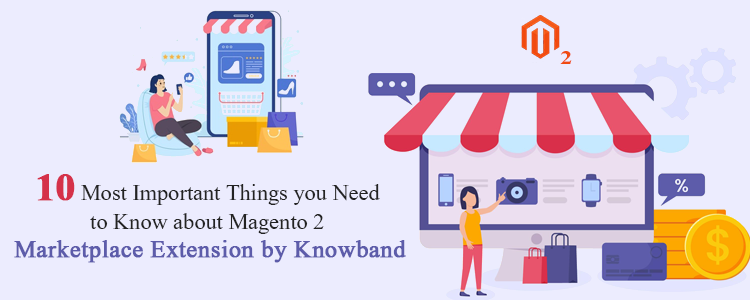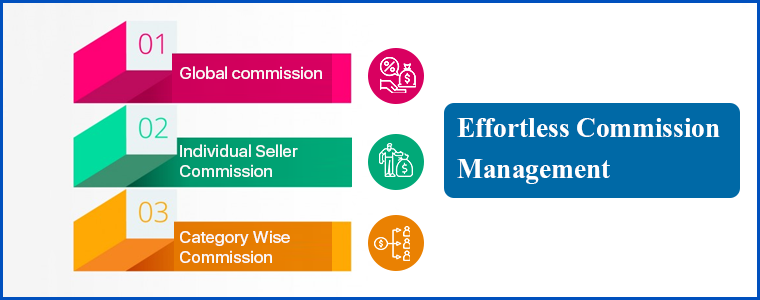The marketplace is the only platform where you can find all the required stuff under one roof just like ‘Amazon’-the world’s largest online marketplace. The opportunity in the marketplace business is at the peak and after the pandemic, many start-ups around the globe are taking a lot more interest in the marketplace business model.
There can be two ways one can build or create their own multi-seller marketplace.
- From the scratch by coding: by developing marketplace software using coding languages like PHP or other.
- On an existing eCommerce platform like Magento, PrestaShop, Shopify, Opencart, WooCommerce, etc.
The former needs lots of money and technical expertise while the latter can be done without any professional coder. If you are a beginner then you must use the existing eCommerce platform rather than starting from scratch. The best solution to create one is Knowband’s Magento 2 Marketplace module which is developed by professional coders with all the technical expertise. We have added several unique features and tailored the extension in a way that it can satisfy the demands of the admin, vendor, and the customers in all possible way.
1. Who can sell on Magento 2 Marketplace?
Marketplaces are the platform where third-party sellers offer their products for sale. And, Marketplace module for Magento 2 allows anyone, literally anyone to register as a seller. The front end of the Magento Marketplace has a seller registration page from where any visitor can register as a vendor.
The seller request needs the approval from admin and once it is done, sellers can sell!
2. Add Several Membership Plans
After the seller registration, the seller has the choice to opt for a membership plan. You can create several membership plans based on the number of products a seller can upload and the valid number of days like a monthly plan or yearly plan for which the plan will be activated.
The store owner can charge some amount to sellers as membership fees.
3. The vendor can manage Inventory
In order to start selling in minutes and control their inventory within your marketplace, your sellers should add their own products. In Magento 2 Marketplace extension, each seller has its own order control panel called a seller dashboard for handling customer orders, and customers can buy from several sellers at once.
The product list for the in-stock product can be auto-updated as it has inbuilt cron functionality.
4. The seller can upload Products in bulk
The bulk upload of the product list is possible with Magento 2 Marketplace Module and the seller can upload .CSV file from the dashboard. This will reduce the extra time spend on product listing and this can be done effortlessly.
5. Order handling by both admin and sellers
Both the owner and the associated seller would be handling the orders placed on the marketplace. The vendor can see the orders in the seller dashboard, while the admin can see all the orders in the admin panel of the Magento 2 marketplace module. You can change the order status, mark an order as shipped, pending, etc.
Furthermore, the store owner may decide to allow or forbid the sellers from handling the orders with the help of Magento 2 Multi-vendor marketplace module.
6. The shipping system
The seller can add shipping options: The Magento 2 Marketplace module enables sellers to integrate their own shipping options. With the aid of this, they can add many shipping options to their goods and chart them.
Admin can add shipping options: The module also helps the administrator of the store to add different shipping options for the sellers.
7. Payment flow structure
Making the on-time payment is an issue when there are many sellers but cron automated payment functionality releases the burden completely from the admin’s head.
The store owner may enable automatic seller payouts that automate the payment request process. Admin may either use cron URLs for this setup or use the “Process Paypal Payout Status” cron directly.
Also, the sellers are entitled to make payout requests for the balance. The admin can approve the payout requests manually with a single button click, making it easy for the admin to manage the Magento 2 Marketplace operations.
8. Effortless Commission Management
The sellers’ commission can be configured by the admin on three levels.
- Global commission: All marketplace sellers will be subjected to the Global Commission Rate. For instance, if you add 20% as global commission then it will be fixed for every seller and every product listed on the marketplace.
- Individual Seller Commission: The commission fee can be charged differently on the seller level for individual sellers on the Magento 2 Marketplace.
The priority is set to the seller wise commission option.
- Category Wise Commission: Third and the last way to charge the commission is category wise. Store admin can set the default commission on the categories.
The admin can see the commission earned order wise from every seller.
9. Default email templates
It is necessary to notify the sellers and customers about the order updates on time. There are several default email templates in the marketplace modules for the Magento 2 platform that are pre-crafted for sending different updates.
We listed several email templates in our Magento 2 marketplace module’s backend which can be used for sending notifications to sellers and customers. Using this plugin, the admin can edit any email template right from the admin panel. Multiple languages support all the email templates.
10.Versatile Approach and compatibility
The module is compatible with all Magento 2 themes. It supports multiple languages that can help you sell globally. Many Magento 2 extensions are compatible with Magento 2 Multi-vendor marketplace module. You can even create your mobile app using Magento 2 Mobile App Builder.
More to offer:
There are various seller details that can be monitored by admin like best-selling products, product and seller reviews, transactions, earnings, orders received by individual sellers, and much more. The marketplace module has many other features that can help you create a marketplace on Magento 2 platform. Refer to the user guide or the video tutorial for the same.
Final Words:
It’s becoming easier to build an online marketplace, and with accessibility comes stiff competition. However, that’s nothing to be afraid of. You will make your marketplace site stand out from the crowd and beat the competition with the best blend of techniques for what you’re offering. Knowband’s marketplace solution can help you launch your online marketplace from the beginning to the end.
Now you know the important features of the Magento 2 Multi-vendor Marketplace module and I hope this article was helpful to you. Drop a line in the comment section if you like it or write to us at support@knowband.com if you need any assistance in creating your marketplace.
Knowband also developed the marketplace module for OpenCart, Magento, and PrestaShop platforms.
Recommended Reads:
- How to Start On-demand Grocery Business with Knowband Marketplace Module
- Key Benefits of Starting an Online Marketplace
- Top 10 Hyperlocal Business Ideas for 2020
- Types of Online Marketplaces: Start your own with Multi Vendor Marketplace Module






